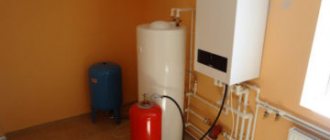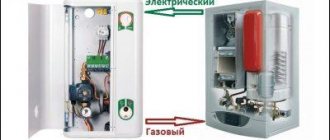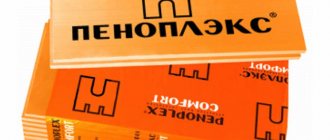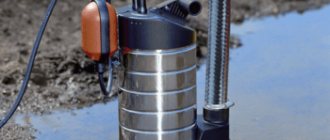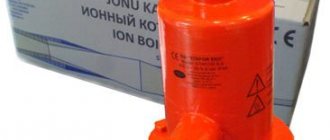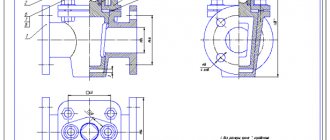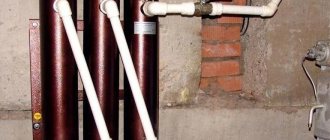The most optimal and economical source of heating for a country house is still a gas boiler.
There are a huge number of manufacturers of these products on our market - Bosch, Buderus, Viessmann, Vaillant, Baxi, Navien, etc.
In addition, there are single-circuit and double-circuit models, traditional and condensation, wall-mounted and floor-mounted, with an open and closed chamber. Which one should you choose and what technical issues should you pay attention to in addition to the brand?
Let us help you understand this matter in order to avoid irreparable mistakes when purchasing.
Power calculation
At present, no one questions the project for power supply to the building. This is taken for granted.
Mistake #1
At the same time, not everyone orders the same heating project.
This leads to problems, first with the correct selection of the power of a gas boiler, and then with its operation.
Mistake #2
You cannot select power based on some average parameters.
The most popular way of them is to divide the total area of the house into 10 m2. As a result, the calculated value is supposedly obtained.
In this case, the thickness and material of the walls, dimensions, number and type of windows, doors, the presence of an attic, etc. are not taken into account.
If you want to find out the average power without a project, at least use online calculators. You should choose those that require you to enter the maximum number of parameters.
For example, this one is TYTS.
But still, for a comfortable and quiet life, initially include in your expenses a separate amount for the heating supply project. It should also include a diagram of the entire heating system and calculate the heat loss of the house.
Determining the power of a gas appliance
This criterion is the most important, since it determines how efficiently you can heat your home.
You should know that the technical documentation indicates a specific parameter (nominal performance). In addition, the instructions provide recommendations for what area this model is designed for.
But it is better to entrust the final calculations to professionals.
The power of heating equipment directly depends on the thermal insulation properties of your home. It consists of:
- volume (space and ceiling height);
- compactness of the building (number of walls);
- specifics of the location and arrangement of windows and doors;
- location and insulation of unheated adjacent rooms (attic, basement, garage, etc.);
- climatic zone of the room (temperature, wind intensity, humidity).
Heating is greatly influenced by the number of window openings and the area of contact with the external environment. This calculation will be correct for the central strip and, accordingly, insulated walls. For hot water supply, the result obtained is multiplied by 1.2. In order not to put the power generator into the “overload” position, a coefficient of 1.3 is added. As a result, we should obtain the required productivity approximately twice as large as the minimum calculated threshold. We have provided you with an illustration for the cottage. For a building with several owners, the calculation method will be different from this.
On the Internet it is easy to find calculators for calculating the required heat transfer for different types of buildings. All of them, with one degree or another, allow you to determine what power you should install.
In any case, the results will be approximate, so it’s worth adding a performance margin of about twenty percent. We provide you with a video that clearly shows how to determine the required kilowatts yourself.
Electrical and thermal power
When people first see a boiler plate with a power of 24 kW or more, it makes them dumbfounded.
Mistake #3
Wow, how much electricity will such a boiler “reel” in?
Do not confuse the electrical and thermal power of heating devices. In the worst case, a gas boiler consumes no more than 150-200 W per hour from the outlet.
Therefore, to power it during a blackout, conventional batteries with an inverter or so-called UPS are sufficient.
We are not talking about any kilowatts here.
Boiler with power reserve
Mistake #4
The greater the power reserve of the boiler, the greater the gas consumption will be.
Therefore, it is not economically profitable to take a gas boiler with a reserve. This is not always true.
First of all, this problem concerns “dumb” floor-standing and obsolete wall-mounted boilers.
This is what the operating schedule for a 20 kW and 30 kW device looks like.
Vertically we have gas consumption, horizontally we have operating time. Two modes, the so-called clocking, are drawn at the top. Bottom – comfortable operation mode with constant power in cold weather.
Timing and solution methods
Typically, clocking is observed during the off-season, when there are no severe frosts and there is no need to warm up the system for a long time.
In this situation, the boiler starts at maximum, quickly heats the water and turns off. Next, the pump removes the coolant throughout the system, the temperature drops, and the burners start up again.
In this mode, both 20kW and 30kW boilers operate. What's the difference?
And the difference is that the first one will consume gas during the launch intervals, conditionally 2m3, and the second 3m3. When the boiler cycles, it does not have time to evaluate anything and reach optimal power.
It starts at maximum and stops at maximum. But all this applies to old, “dumb” models.
In modern wall-mounted appliances with modulating burners (1:10) and smart electronics, the boiler’s operation is designed in such a way that if the automation initially detects overheating of the coolant, the next switching on will occur at a lower power, or you can reduce it yourself.
The only problem is when the minimum power of the boiler is not so minimal.
Therefore, check the instructions and ask the seller whether the gas boiler has a modulation function or not. And the more frequent the adjustment step, the better.
Mistake #5
But there is no need to overdo it with the so-called “brains”.
90% of consumers never use weather-dependent automation or GSM modules in their lives. It's not worth overpaying for them.
It’s better to install a couple of smart and inexpensive room thermostats.
More details
Most people solve the age-old problem with clocking in this way.
Manufacturers with a solid reputation
Among the many manufacturers, users and experts identify several brands that can really be trusted.
German company Vaillant
Presents high-quality heating equipment in a wide variety of designs. These are single- and double-circuit equipment of condensation and convection type.
The power of the units varies from 4 to 280 kW. The advantages of Vaillant include high-tech equipment, which makes its operation extremely simple and comfortable. The manufacturer cares about the highest level of safety of its products.
The units are equipped with gas supply control systems, auto diagnostics and a variety of types of protection. The equipment has high efficiency. For condensation models it is about 109%, for convection models – 94%. Vaillant boilers can operate on different types of gas, are environmentally friendly and very economical. For the convenience of consumers, the company has deployed a wide service network.
Gas boilers from Vaillant are equipped with the most modern protection systems
The general disadvantages of the equipment include the lack of necessary voltage stabilizers in the equipment package and rather expensive service. In some cases, it may not be entirely fast. Users highly rate Vaillant brand equipment and consider it excellent.
Brand Buderus from Germany
Represents several lines of heating devices. Wall-mounted Logamax plus – condensing units with power from 14 to 100 kW, Logamax – convection units from 7.8 to 35 kW. Floor equipment is available in two lines. Logano plus – condensing units with power from 16 to 1200 kW, convection Logano units from 20 to 1200 kW. The range of equipment is very wide and includes all known modifications.
Boilers from Buderus are characterized by high energy efficiency, high-quality automatic control, making operation easier. They can be built into the remote control system and can be controlled remotely. The devices combine well with other branded equipment, are equipped with effective sound and heat insulation, are highly environmentally friendly and cost-effective, and have an attractive appearance.
Buderus gas boilers are easily integrated into the Smart Home intelligent system. They can also be controlled remotely using a mobile device
Equipment from Buderus is reliable, high quality, economical, versatile and unpretentious. They rarely fail. Among the disadvantages, it is worth noting the completely plastic make-up taps and the lack of protection against possible power surges.
Italian brand Baxi
Produces a wide range of heating equipment. A distinctive feature of this equipment is the presence of a total protection system against a variety of threats: freezing and overheating of the coolant, lack of pressure, etc.
The devices are equipped with manual and electronic adjustment and control systems, highly informative LCD displays, and built-in automation capable of responding to weather changes.
Baxi boilers are economical and equipped with modulating burners. They can operate in two temperature ranges. The units are easy to install and convenient to use. Among the significant shortcomings, it is worth noting some capriciousness of the electronics and the possibility of incorrect operation of temperature sensors.
Zhukovsky Machine-Building Plant
The largest domestic manufacturer of high-quality heating gas equipment. There are three main lines of production: “Comfort”, “Beetle” and “Universal”, within which more than 30 models of boilers for various purposes are produced. Their advantages include improved automation, which has led to an increase in efficiency up to 89% and a decrease in the toxicity of flue gases.
Wall mounted boilers from Baksi fit perfectly into any interior. They are economical and safe to use
The equipment is capable of working with two types of gas, has non-volatile ignition, is equipped with overheating protection and gas mixture pressure control. The boilers are inexpensive and there are no problems with spare parts for them. Disadvantages include slight noise during operation of the equipment and low quality of manual welding carried out at the factory. Whereas there are no complaints about automatic.
Important advice. Don't skimp on quality. It is better to pay a little extra and purchase a device from a brand with a good reputation. It will last much longer than a fake of unknown quality, attractive only for its low cost.
We also recommend reading our article on how to install a wall-mounted boiler yourself.
Water volume and gas consumption
Mistake #6
The greater the volume of water in the heating system, the greater the power of the gas boiler should be.
This is not true at all. The final power is affected solely by the heat loss of the building.
The volume of water affects only the speed of INITIAL warming up.
When the temperature reaches the set values, the amount of heat released from the boiler will be the same. It doesn’t matter how much water there will be in the system - 10 liters or 100 liters.
Material of manufacture
The heat exchanger for the boiler is made from durable materials that conduct heat well, are not prone to corrosion and are sufficiently resistant to pressure. Since the cost of the material also has to be taken into account, the choice is limited.
Steel
A steel heat exchanger is cheaper in price, but less durable.
This is the most affordable material. Steel is very strong, but can be processed well. The price is low. The advantage of this option is resistance to high temperatures. Steel is plastic and does not crack when heated, and does not deform even in areas in contact with the burner.
A steel heat exchanger for a solid fuel or gas boiler is prone to corrosion. Water inside the tubes and combustion products in the boiler chamber have a destructive effect on the material. This affects durability. The steel model weighs a lot, which leads to additional fuel consumption for heating the element itself.
The stainless steel heat exchanger is resistant to corrosion and lasts for at least 50 years.
Cast iron
The material is much more resistant to corrosion than steel, and is not afraid of rust and the action of acid anhydrides. The service life reaches 50 years. However, cast iron is a brittle alloy and can crack under the influence of temperature. To avoid damage, the cast iron tubular heat exchanger must be washed: if ordinary water is used, then once a year; if antifreeze - then once every 2 years; if distilled liquid - once every 4 years.
The weight of a cast iron element is even greater, so more fuel and time have to be spent on heating.
Copper
Copper is a noble metal that is not susceptible to any type of corrosion. It is chemically inert and tolerates pressure well. Copper conducts heat better, so less fuel is required to heat the element itself and the flowing liquid. The weight of the copper model is small, the dimensions are compact with a very developed working surface.
The disadvantage is the high price. Also, the copper heat exchanger is too sensitive to heating to high temperatures. More often found in boilers from foreign manufacturers.
Manufacturer country
Which wall-mounted gas boiler is better - Korean or European? It is between them that the struggle most often occurs in this segment.
Mistake #7
Korean boilers are more economical than European ones.
Mistake #8
European boilers are more economical than Korean ones.
All wall-mounted turbocharged boilers work approximately the same. Yes, their filling is different, but this does not affect the SAVINGS.
The efficiency of both Korean and European models is the same. Here you need to look at another parameter, namely, the availability in your city of a service for maintenance and repair of a specific brand.
Because sooner or later your boiler, no matter how reliable it is, WILL BREAK.
Based on this factor, it is worth making a choice in one direction or another. Remember a simple rule - the further you live from the service, the simpler the units you choose.
Prices: summary table
| Model | power, kWt | Number of circuits | Efficiency, % | Gas consumption, m³/hour | Cost, rub. |
| BAXI ECO Four 1.24 | 24 | 1 | 91,2 | 2,78 | 40 000-45 000 |
| Protherm Panther 25 KTO | 25 | 1 | 92,8 | 2,8 | 59 000-63 000 |
| Viessmann Vitopend 100-W A1HB | 24 | 1 | 91 | 2,77 | 51 600-55 000 |
| BAXI Duo-tec Compact 1.24 | 24 | 1 | 105,7 | 2,61 | 59 000-65 000 |
| Rinnai BR-UE30 | 29,1 | 1 | 92,5 | 2,87 | 59 900-67 000 |
| BAXI ECO-4s 24F | 24 | 2 | 92,9 | 2,73 | 46 500-47 200 |
| BAXI LUNA-3 240 Fi 25 | 25 | 2 | 92,9 | 2,84 | 62 000-78 000 |
| Vaillant turboFIT VUW 242/5-2 | 23,7 | 2 | 93,5 | 2,66 | 45 600-53 000 |
Conclusion
Wall-mounted gas boilers are economical, convenient and practical heating equipment. They can not only heat the room, but also provide hot water. Choosing is not so difficult if you understand all the characteristics. But you shouldn’t buy the first one you come across, because the comfort and coziness in your home depends on the boiler.
Gas boilersWall-mounted boilers
How to check the manufacturer?
Mistake #9
Often, instead of a gas boiler with European components, you can easily buy a Chinese boiler.
In fact, there is nothing wrong with this, it’s just that sellers should be honest with you from the beginning, and not push purely European quality.
How can you avoid falling for this and check everything yourself? Elementary.
Type the full name of the model into Google and add two words – “CERTIFICATE OF CONFORMITY”. Download it and study it carefully.
Mistake #10
If you cannot find such a certificate at all, then it is better to immediately avoid this model.
Each product that is imported into the territory of the CIS countries must have a certificate. The “Manufacturer” column indicates exactly where the boiler was actually manufactured. Here are two certificates for a visual comparison.
See the “Products” column for the specific brand.
This applies not only to assembly, but also to components. Already, few manufacturers save only on labor at the expense of the Chinese.
Therefore, you should not believe the sellers that the boiler was only assembled with a screwdriver in China, and all its internals are European. Although, again, we repeat, in the modern world, Chinese components are not always bad.
Here, first of all, we are talking about the honesty of the seller.
Branding is an important point
Look at the specific branding of the boiler itself. It is a rare manufacturer that makes a specific product from scratch to the final result. Usually he orders some specific parts from outside. So, almost always wall-mounted gas boilers are made entirely from some third-party components. Then the manufacturer himself assembles everything into a single design at his factory, finalizes the software, arranges everything as needed and releases everything in a beautiful form. A good manufacturer will always show what his gas boiler is made of. He can write about this in his brochures, sketch out what the boiler is made of, but sometimes he remains silent. But in this case, looking into the boiler, you will definitely see what the boiler is made of, everything will be written on every detail. If you see a branded wall-mounted gas boiler, you can consider purchasing it. This is a good option for your home. If you look into the boiler and do not understand what it is made of, the manufacturer is trying to hide what parts are used. In such cases, simply write the part marking, production date and serial number. It is better not to buy such gas boilers. If the boiler is made of good parts, the manufacturer will always want to say so.
Branding example. The fan has a label from the Polish manufacturer Fime.
These five points should help you choose a gas boiler that will delight you in your home for many years, will not create problems and will last long enough.
Source
Double-circuit or single-circuit?
Mistake #11
If in addition to radiators at home there is also a heated floor, then you must definitely buy a double-circuit boiler.
Double-circuit boilers are needed only for hot water supply (DHW) - heating + separate hot water. The single-circuit device copes well with both heated floors and radiators.
All it does is simply heat the water. What kind of heating system you have doesn’t really bother him.
The main thing is to design and calculate everything correctly. In general, for normal hot water supply it is not recommended to buy a boiler with a power of less than 24 kW.
There are many copies on the Internet about double-circuit and hot water supply.
To briefly formulate the essence, it is as follows:
- one bathroom or two hot water points + all this is not far from the boiler room - your choice is a double-circuit boiler
- three or more water points - single-circuit and indirect heating boiler
Condensing or traditional boiler?
Boilers are like people, some are traditional and some are not.

